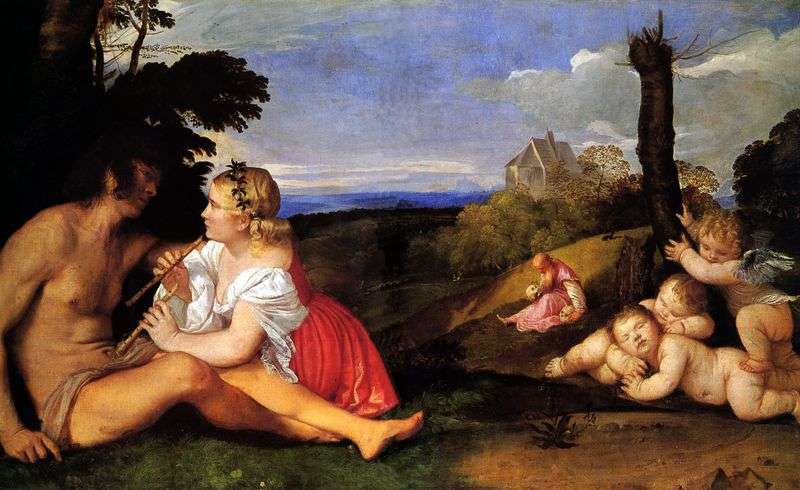
In the content of this work of Titian, the pastoral elements proper have fancifully combined with signs of allegory. It is characterized by the combination of pastoral imagery with philosophical problems, revealed in the idea of three ages of man, where different stages of life are represented as two sleeping children, playing a young couple and an old hermit solitary pondering over two skulls.
Such a connection undoubtedly indicates the presence of an allegorical meaning, which led to a number of interpretations of the content of the picture. It saw the expression of the idea of all-destroying time, and the allegory of lust, combined with the idea of the fragility of earthly pleasures.
According to another point of view, her characters are the heroes of the pastoral novel of the ancient Greek writer Long, Daphnis and Chloe. As for the scene with sleeping children and the Eroth who protects their sleep, one can find in it the reflection of the idea of the person’s initial predisposition to the sinful lust that accompanied him from the earliest years.
The point of view of Titian’s painting as an allegory of vanitas vanitatum looks quite convincing: the motif of the two skulls over which the old man bows is the key to this interpretation. In Renaissance art, their portrayal acted as an unequivocal symbolic reminder of the sinfulness of man, punished by death.
This is also possible in the case of Titian’s painting, where gloomy signs expressively shade the erotic scene in the foreground. In this connection, it is by no means accidental detail that the pair of young lovers, whose duet embodied the idea of the fullness of sensual pleasures, in the landscape space of the picture as a moral alternative stands the church building, though taken to the background, but still well-marked among the rest the motifs of the landscape.

 (2 votes, average: 4.50 out of 5)
(2 votes, average: 4.50 out of 5)